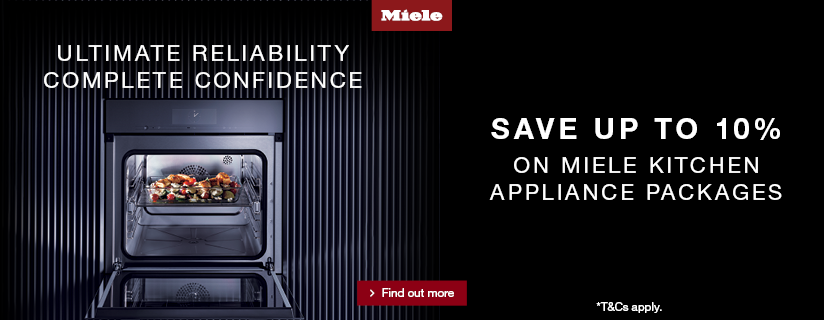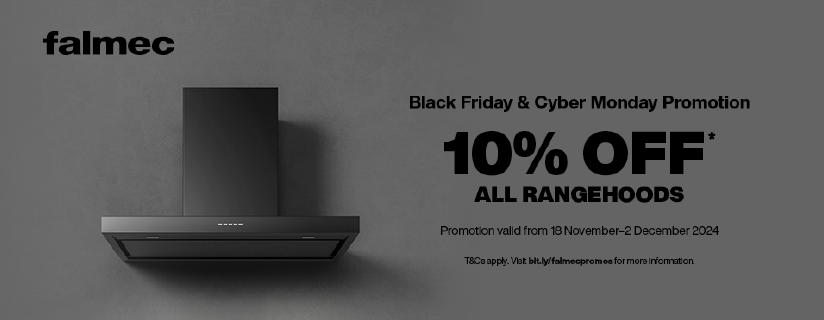No products found for your query {{ searchQuery }}
FAQs
To replace the light bulb in your rangehood, first, turn off the power to the unit. Locate the bulb cover, which may require a screwdriver to remove. Once the cover is off, gently unscrew the old bulb and replace it with a new one of the same type and wattage. Reattach the cover and restore power to ensure the new bulb works properly.
While some rangehoods can be installed by a competent DIYer, especially ductless models, ducted rangehoods or those requiring electrical wiring may be best handled by a professional.
Professional installation ensures that the rangehood is mounted securely, the ductwork is correctly installed, and the electrical connections are safe, reducing the risk of malfunction or damage.
The best way to clean a rangehood is to regularly wipe down the exterior with mild detergent and warm water. For the filters, remove them and soak them in hot, soapy water, then scrub to remove grease and grime.
Some filters are dishwasher-safe, so you can clean them that way if allowed by the manufacturer. Be sure to also clean the fan blades and interior surfaces to maintain optimal performance.
The different types of rangehoods include canopy rangehoods, under-cabinet rangehoods, island rangehoods, downdraft rangehoods, and wall-mounted rangehoods.
Canopy and wall-mounted rangehoods are fixed and usually have a chimney design, whereas under-cabinet models are mounted beneath cabinets.
Island rangehoods are, as expected, installed over kitchen islands. Downdraft rangehoods are integrated into the cooktop or counter and pull air downward to give kitchens a sleek and stylish finish.
Slideout rangehoods, also known as retractable or pull-out rangehoods, are a type of kitchen ventilation system designed to be compact and discreet. They are installed underneath a kitchen cabinet and can be extended when needed and retracted when not in use, making them ideal for kitchens with limited space.
When pulled out, the rangehood activates and begins extracting cooking fumes, odours, and smoke. When pushed back in, it remains flush with the cabinetry, blending seamlessly into the kitchen design.
A fixed rangehood is a type of kitchen ventilation system that is permanently mounted above a cooktop or stove. Unlike retractable or slide-out models, fixed rangehoods remain stationary and are typically installed under a cabinet, against a wall, or as part of a chimney or canopy structure.
They work by drawing up smoke, steam, grease, and odours from cooking and either venting them outside or filtering and recirculating the air back into the kitchen and come in various styles and sizes to suit different kitchen designs and ventilation needs.
A range hood is a kitchen appliance designed to remove smoke, steam, grease, and cooking odours from the air. It is typically installed above a cooktop or stove and works by either venting the air outside (ducted) or filtering it and recirculating it back into the kitchen (ductless).
An island rangehood is a type of kitchen ventilation system designed to be installed above a cooktop located on an island or in the middle of the kitchen.
Unlike wall-mounted or under-cabinet rangehoods, island rangehoods hang from the ceiling and are designed to ventilate open spaces, providing efficient removal of smoke, steam, and odours from the cooking area.
To maintain your rangehood you'll need to regularly clean the filters, wipe down the exterior, and check for any blockages in the ductwork if it's a ducted model.
Replace filters as needed, and inspect the fan and motor for any issues. Regular maintenance helps keep your rangehood running efficiently and prolongs its lifespan.
To choose the right rangehood for your kitchen, consider factors such as the size of your cooktop, the layout of your kitchen, the type of cooking you do, and your ventilation needs.
Match the width of the rangehood to your cooktop, ensure it has sufficient extraction power (measured in cubic meters per hour or CFM), and decide between ducted or ductless models based on your kitchen's setup.
Key considerations need to be made for your budget and kitchen aesthetic.
To determine the correct size rangehood, match the width of the rangehood to the width of your cooktop or stove.
The rangehood should be at least as wide as the cooktop to effectively capture smoke and odours. You'll want to consider the rangehood's extraction power, measured in cubic feet per minute (CFM), ensuring it matches the size of your kitchen and cooking style.
For example, if you generally cook using a lot of pots and pans, a higher extraction power may be preferred, for those who tend to cook one-pan meals, a lower extraction power will be sufficient.










-1729237690.jpg)









